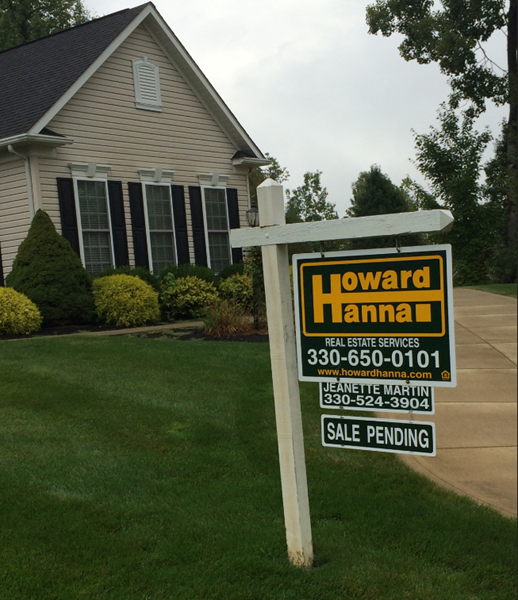Steel Markets

Existing Home Sales Fall for Third Month
Written by Sandy Williams
July 24, 2018
A housing shortage is impacting existing home sales and pushing prices to a new high, reported the National Association of Realtors. The June data from NAR shows existing home sales decreased 0.6 percent in June, falling for the third month in a row and the fifth time this year. Sales were at a seasonally adjusted annual rate of 5.38 million, from a downwardly revised 5.41 million in May.
“There continues to be a mismatch since the spring between the growing level of homebuyer demand in most of the country in relation to the actual pace of home sales, which are declining,” said NAR Chief Economist Lawrence Yun. “The root cause is without a doubt the severe housing shortage that is not releasing its grip on the nation’s housing market. What is for sale in most areas is going under contract very fast and in many cases has multiple offers. This dynamic is keeping home price growth elevated, pricing out would-be buyers and ultimately slowing sales.”
 Inventory was actually higher in June, climbing 4.3 percent to 1.95 million existing homes available for purchase. On a year-over-year basis, inventory rose for the first time since June 2017, increasing 0.5 percent from a year ago. Inventory is at a 4.3-month supply at the current sales rate, up from 4.1 months in May and 4.2 months a year ago.
Inventory was actually higher in June, climbing 4.3 percent to 1.95 million existing homes available for purchase. On a year-over-year basis, inventory rose for the first time since June 2017, increasing 0.5 percent from a year ago. Inventory is at a 4.3-month supply at the current sales rate, up from 4.1 months in May and 4.2 months a year ago.
“It’s important to note that despite the modest year-over-year rise in inventory, the current level is far from what’s needed to satisfy demand levels,” added Yun. “Furthermore, it remains to be seen if this modest increase will stick, given the fact that the robust economy is bringing more interested buyers into the market, and new home construction is failing to keep up.”
Prices for single-family homes continued to rise in June, up 5.2 percent year-over-year to a median price of $279,300. The median price for existing condos and co-ops increased 4.9 percent to $258,100.
“Existing home sales have plateaued over the past year and a half, even as prices have risen to new highs – yet another signal that the post-recession rebound in home buying has seemingly run its course,” said Aaron Terrazas, a senior economist for Zillow. “Today’s data will undoubtedly raise questions as to whether the housing market has reached an inflection point after years of sellers holding the upper hand — even though any gains for buyers at this point will be marginal, at best, and in the near term the market is more likely to become simply less frenetic and not meaningfully slower.”
“If there is some good news it’s that inventory seems to have reached a floor and has been mostly stable since the end of 2017,” added Terrazas. “Still, even though inventory has bottomed out, it isn’t yet climbing back up toward more normal levels—and overall numbers mask a big divide between the top and bottom of the markets. Builders are focused largely at the top of the market, and buyers at the highest price points may find things slowly shifting in their favor over the next few months. But the market remains very competitive for entry-level homes.”
The regional breakdown of sales and pricing in June was as follows:
- Northeast: up 5.9 percent to an annual rate of 720,000; median price up 3.3 percent y/y to $305,900
- Midwest: up 0.8 percent to an annual rate of 1.27 million; median price up 3.5 percent y/y to $218,800
- South: down 2.2 percent to an annual rate of 2.25 million; median price up 2.7 percent y/y to $237,500
- West: down 2.6 percent to an annual rate of 1.14 million; median price up 10.2 percent y/y to $417,400

Sandy Williams
Read more from Sandy WilliamsLatest in Steel Markets

USW cheers Evraz NA agreement with Atlas Holdings
The United Steelworkers (USW) labor union celebrated recent news of the signed agreement between Atlas Holdings and Evraz NA in which the Connecticut-based private equity company said it plans to acquire North America’s Evraz facilities.

Steel buyer spirits tempered by soft spot market conditions
Steel sheet buyers report feeling bogged down by the ongoing stresses of stagnant demand, news fatigue, tariff negotiations or implementation timelines, and persistent macroeconomic uncertainty.

Hot-rolled coil buyers continue seeking certainty
Steel market participants contend that buyers will remain in “wait-and-see" mode until some market stability is restored.

Latin American steel advocates warn on cheap import flood
Subsidized Chinese steel imports and cheap steel products from Association of Southeast Asian Nations (ASEAN) entering Latin American (LATAM) are threatening the region's steel market.

CRU: Steel prices fall amid global demand weakness
The forceful headwinds bearing down on steel markets across the globe have created demand challenges and sent prices southward. The US, however, challenged the global trend.
